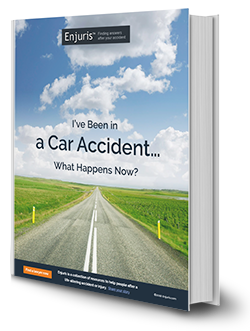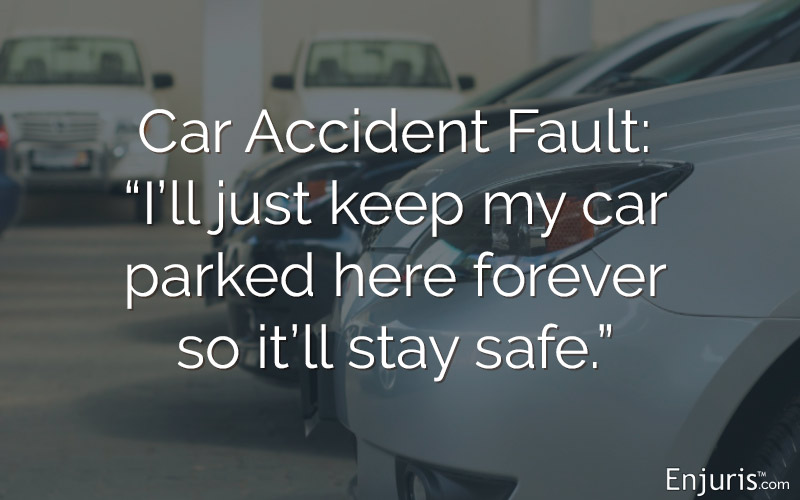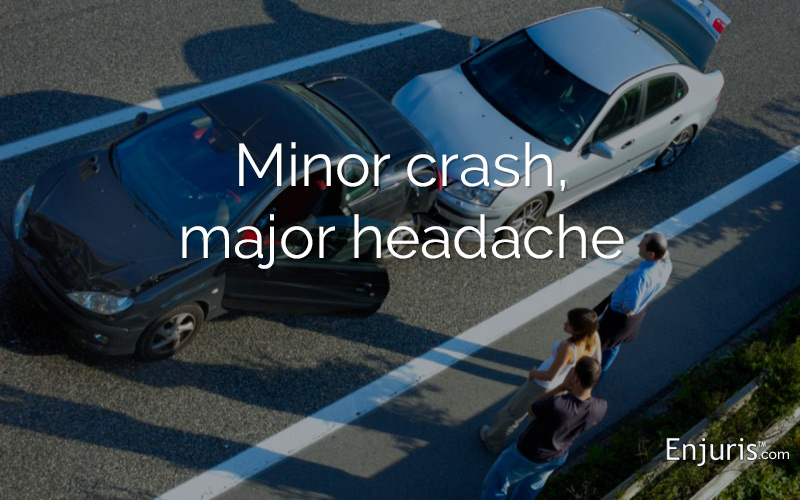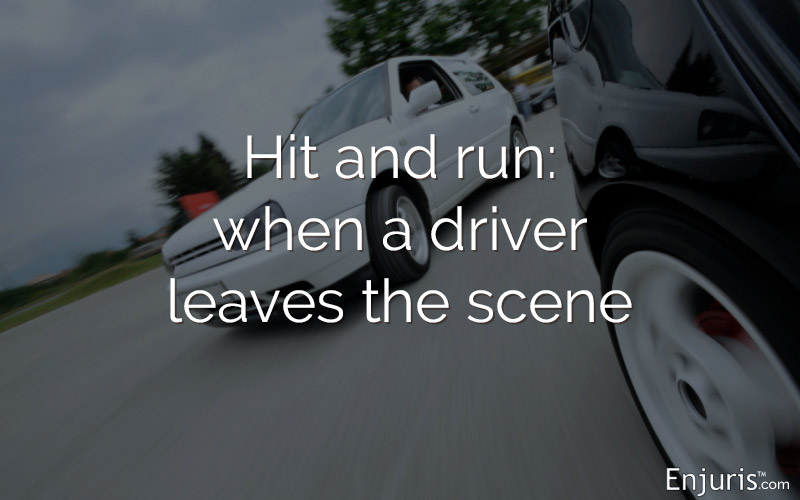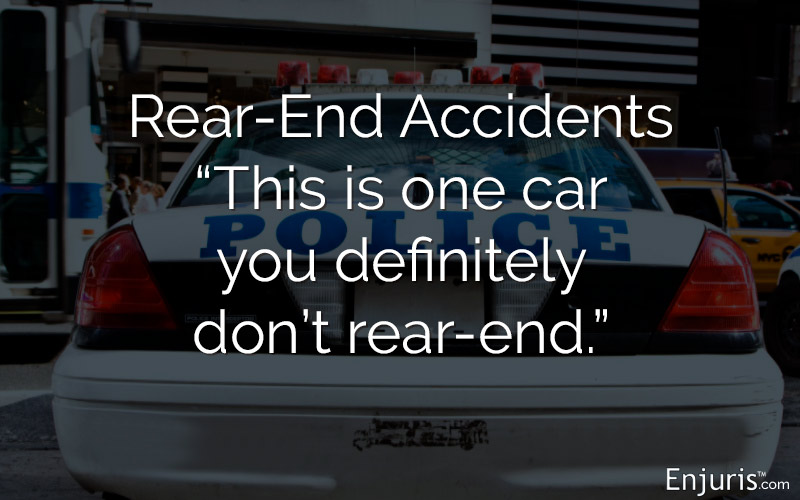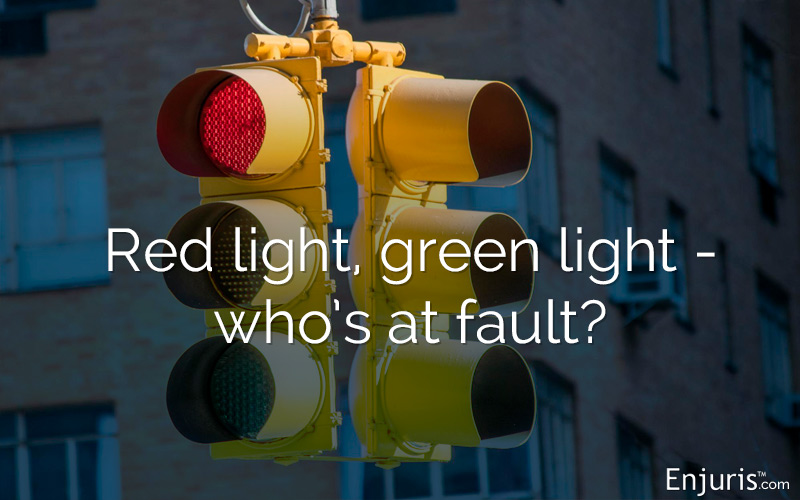Find out how a car crash injury claim is handled in the Hoosier State
Indiana drivers travel roughly 82 million miles every year. Though many of those miles are incident-free, accidents are inevitable.
Getting into an auto accident in Indiana isn't the same as being in a crash in California or any other state. If you're involved in a car accident in the Hoosier State, it's important to be familiar with the applicable state laws and regulations.
Indiana car accident statistics
When it comes to fatal car accidents, Indiana is actually one of the safest states to travel by car. In 2018, there were 1.05 fatalities for every 100 million vehicle miles traveled. The national average was 1.13 fatalities. South Carolina, which led the nation, saw 1.83 fatalities per 100 million vehicle miles traveled.
Of course, catastrophic accidents still do happen in Indiana:
| Indiana car accidents by severity (2014-2018) | ||||
|---|---|---|---|---|
| Year | Fatal | Non-fatal | Property damage | Total |
| 2014 | 704 | 33,864 | 171,223 | 205,791 |
| 2015 | 752 | 34,472 | 181,302 | 216,526 |
| 2016 | 776 | 35,342 | 187,836 | 223,954 |
| 2017 | 836 | 34,234 | 184,211 | 219,281 |
| 2018 | 789 | 32,383 | 183,909 | 217,081 |
Source: Indiana University Public Policy Institute
The vast majority of car accidents in Indiana in 2018 (66%) were the result of an unsafe action taken by a driver (such as running a red light). Surprisingly, vehicle defects were the 2nd leading cause of car accidents (11%), followed by driver loss of control (10%), miscellaneous or unknown factors (8%), and physical impairment (1%).
Indiana car accident laws
Most laws governing motor vehicles in Indiana can be found in Title 9 of the Indiana Code. These laws cover everything from vehicle registration to accident report requirements. Let's take a look at some of the highlights:
Hit-and-run laws
To avoid a hit-and-run charge, Indiana law requires that you do 3 things following an accident:
- Stop your vehicle at the scene of the accident (or as close to the scene as possible),
- Provide your name, address, registration number, and license to anyone involved in the crash, and
- If the accident resulted in injury, provide reasonable assistance and contact the police.
If you crash into an unattended vehicle or cause damage to property other than a vehicle, you must:
- Take reasonable steps to locate and notify the owner or person in charge of the vehicle or property, and
- If after a reasonable search you can't find the owner, contact the local police and provide your information
Auto insurance requirements in Indiana
Insurance in Indiana is fault-based, meaning the person responsible for causing a car accident is responsible for paying the damages that stem from the accident.
Because Indiana follows a fault-based system, all motorists are required to maintain the following minimum amount of liability insurance coverage:
- $25,000 for bodily injury to or the death of 1 person
- $50,000 for bodily injury to or the death of 2 or more people in any 1 accident
- $25,000 for damage to or the destruction of property in 1 accident
Keep in mind that liability insurance covers bodily injuries and property damage caused by the insured and sustained by someone other than the insured. What's more, the liability coverage listed above is the minimum amount required, you always have the option to purchase more.
Distracted driving laws
The term "distracted driving" refers to any non-driving activity a driver engages in that has the potential to distract them from the primary task of driving. Examples include:
- Texting
- Eating
- Talking to passengers
- Adjusting the radio
- Watching videos
All distracting activities pose a risk while driving, but not all distracting activities are prohibited by law.
In 2020, Indiana became the 22nd state to pass a law prohibiting drivers from holding a smartphone or similar device. People who violate the law can be fined up to $500 and potentially lose their driver's license.
Operating a vehicle while intoxicated
In Indiana, you're guilty of operating a vehicle while intoxicated (OVWI) if you're operating a vehicle and any of the following are true:
- You have a blood alcohol concentration (BAC) of .08% or more (or .02% or more if you're under the age of 21)
- You have any amount of schedule I or II controlled substances in your system
- Your thoughts and actions are impaired by drugs or alcohol (even if your BAC is lower than .08%)
Determining fault after a car accident
To receive compensation after a car accident, you have to prove that someone else was at fault for the accident. In most cases, this means proving that some other driver was negligent.
To prove negligence in Indiana, a plaintiff must establish that:
- The defendant owed the plaintiff a duty. All drivers have a duty to exercise "reasonable care" to avoid harming others on the road.
- The defendant breached their duty. To prove that a driver breached their duty, you have to establish that they failed to act with reasonable care. Common examples include running a red light, operating a vehicle while intoxicated, and driving aggressively.
- The plaintiff was injured as a result of the defendant's breach. It's not enough that the driver failed to exercise reasonable care. The plaintiff must prove that this failure was the cause of the accident. In other words, but for the driver's action or inaction, the accident wouldn't have happened.
Not all car accidents are caused by drivers. Other responsible parties may include:
- Bicyclists and pedestrians. Just like drivers, bicyclists and pedestrians owe others on the road a duty to exercise reasonable care.
- Property owners. Premises liability laws generally require property owners to maintain their property free from dangerous conditions. If a car accident is caused by a dangerous condition (such as a large pothole or poorly maintained bridge), the owner of the property (often the town or city) can be held liable.
- Manufacturers. If a car accident is caused by a defective product (such as a faulty tire or brake failure), the manufacturer may be liable.
Sometimes the plaintiff is partially at fault for the car accident. What happens then?
Indiana is a modified comparative fault state, which means that the plaintiff's damages are reduced by their percentage of fault. What's more, if the plaintiff is considered more than 50% at fault for the accident, the plaintiff is barred from recovering any damages.
Consider the following example:
John is driving south on Auburn Road in Indianapolis, approaching a 4-way stop. Paul is driving east on Madison Road, approaching the same 4-way stop.
John doesn't have his headlights on and Paul doesn't see him coming. Paul decides to run the stop sign and the two collide. John suffers a whiplash injury and sues Paul for $100,000.
The court determines that Paul was 70% at fault for running a stop sign. The court also determines that John was 30% at fault for the accident because he was driving without his headlights. Under Indiana's modified comparative fault rule, John would only be able to recover $70,000.
Reporting a car accident in Indiana
Indiana Code 9-26-1-1.1 requires that any driver involved in an accident notify the police as soon as possible if the accident:
- Results in injury or death of another person, or
- Damage to an unattended vehicle or other property whose owner can't be located.
In addition to complying with the law, it's a good idea to contact the police following a car accident. The police can conduct a brief investigation and draft a police report that may help support your insurance claim or personal injury lawsuit.
Types of car crash damages in Indiana
Compensatory damages represent the money awarded to a plaintiff in a personal injury lawsuit. In Indiana, there are 2 types of compensatory damages that an injured plaintiff can receive:
- Economic damages. Economic damages represent the monetary losses caused by an accident and include things like medical expenses, lost income, and property damage.
- Noneconomic damages. Noneconomic damages represent the non-monetary losses caused by an accident and include things like pain and suffering and emotional distress.
Additionally, a plaintiff in a personal injury lawsuit may be able to receive punitive damages. Punitive damages are intended to punish the defendant and deter similar behavior. As a consequence, punitive damages are only available in cases where the defendant's actions were intentional or particularly reckless.
Indiana auto accident statute of limitations
Every state has a statute of limitations that sets the amount of time a plaintiff has to file a lawsuit. In Indiana, the statute of limitations for most personal injury cases is 2 years.
With that being said, there are some exceptions. For example, plaintiffs have significantly less time (180 days) when suing a government entity.
- Guide to Indiana Car Accidents and Personal Injury Lawsuits
- How to Receive Compensation After an Indiana Bus Accident
- Indiana Auto Insurance Laws, Requirements, and Coverage Options
- Indiana Bicycle Accidents and Laws
- Indiana Boat Accidents & Personal Injury Liability
- Indiana Drunk Driving Accidents and Lawsuits
- Indiana Hit-and-Run Laws &
Car Accident Claims - Indiana Train Accidents and Railroad Injury Claims
- Pedestrian Accidents and Right of Way Laws in Indiana
- Understanding Distracted Driving Car Accidents & Laws in Indiana
- Who’s Liable If a Plane Crashes in Indiana?
Did you know that car accident law varies by state?
Hurt in a car crash? You may find these resources helpful
Need a lawyer?
What does an injury lawyer do?
A personal injury lawyer helps individuals who have sustained injuries in accidents to recover financial compensation. These funds are often needed to pay for medical treatment, make up for lost wages and provide compensation for injuries suffered. Sometimes a case that seems simple at first may become more complicated. In these cases, consider hiring an experienced personal injury lawyer. Read more
Common car accidents
